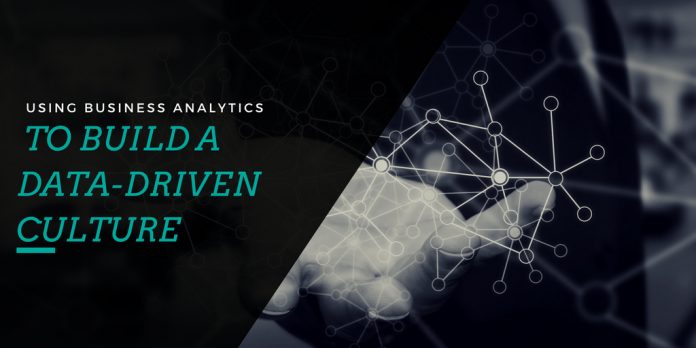Making business decisions based on the best available data is fundamental, but not always easy. Technology, processes, and company culture can all have an impact on how data is used within an organisation. Digital leaders suggest organisations must focus on three key areas: strategy, culture, and agility, which was discussed at a recent event held by Adobe in London, alongside its recent Digital Trends 2018 report.
1. Building a data driven culture
James Birchall, manager in data analytics at Santander, says his organisation has changed the way it views data, and the business now buys into the value of insight. It has been a three-year process, where Birchall has used the expertise of his team to embrace analytics technology and to spread benefits across the organisation.
“As an analyst, I started to think about how we could change the culture — we must empower the rest of the business to make better use of data,” he says. “We want business teams to be more autonomous in the ways they use data and we want to help up-skill the rest of the organisation so people become more aware of the opportunities.”
Birchall says insight has become increasingly crucial as the pace of change has quickened. Just a few years ago, digital banking centred on electronic payments and transfers. Now, banks must also consider a range of customer interaction points. A third of Santander’s customers, for example, use the firm’s mobile banking app.
“Digital is not standing still — there’s always a new feature or service,” says Birchall. “Such change provides more opportunity for digital analytics to measure performance than ever before. We want to deliver operational and digital excellence. And we can’t do that if we don’t use data to understand our customers’ experiences.”
Driving cultural change through data analytics has not been easy. Birchall says the situation he faced at Santander three years ago was “bleak”. The firm’s analytics platforms provided limited data availability and low accuracy, and which limited trust.
“We produced lifeless tables and people were stuck in spreadsheets — we wanted to change that and help empower our teams,” says Birchall, who says the fix required an investment in technology and people. His business case for an investment in the Adobe Analytics platform was supported by the board. Such analytics, he said, would help executives to identify which projects were likely to boost customer experience.
Birchall then helped the rest of the organisation to create insight autonomously through the analytics platform.
“We made the investment and decided the business should make decisions based on facts,” he says. “We can facilitate better conversations as a company. The days of static reporting are gone. We’re unlocking more opportunities. We’ll be working with teams like fraud and customer relationship management to unlock new capabilities. We’re not stopping. We have a packed agenda this year.”
2. Using data to change customer experiences
Phil Lewis, director of digital experience at Boden, runs three teams — digital insight, digital trading, and digital product and user experience — at the retailer. While 95 per cent of the firm’s 1.8 million customers buy products online, Boden is now moving onto the high street, having recently opened its first stores in London.
“It’s an exciting time,” says Lewis. “At Boden, I’m trying to ensure I’m a partner to the business for what they need. I’m using data to try and enable smart, informed decisions. We’re focused on the customer — we want to deliver great services, engaging experiences, and we’re daring to be different in our approach.”
Digital transformation plays a key role in that strategy. The firm recently opened a new head office that is built around agile working practices, where loosely-coupled teams deliver innovative solutions through data and content to business challenges.
Lewis ran a customer mapping exercise and identified how and why customers sometimes suffered broken experiences. Lewis used insight from this mapping process to pull together a cross-functional, agile team to think about how the organisation could continue to develop great customer experiences.
“When you’ve got a team of people who are stuck working in waterfall methods, it can be difficult to implement a culture of change with no limitations. To be agile, you must change the team and allow people to communicate and then engage with the broader business,” he says.
Lewis says the aim of the transformation initiative has been to help workers across the business to develop new customer experiences through data and content.
“Digital transformation is hard,” he says. “Define success from a business and customer perspective. The key is to spend the time focusing on what’s important — you need to bring everyone with you if you want to create great experiences.”
3. Getting your strategy right
Sean Donnelly, senior analyst at researcher Econsultancy, says all the evidence suggests customer experience is now a strategic priority for businesses. He points to results from the recently released Digital Trends 2018 report, where his firm polled 13,000 marketing, creative, and technology professionals.
“Enlightened businesses are using experience and data to structure their capability, invest in technology and deploy their resources,” says Donnelly. “The top-performing companies — which represents just 11 percent of organisations — are twice as likely to define themselves as digital-first. Organisations that have a clear culture and strategy are more than twice as likely to out-perform their peers.”
Pioneering companies are almost four times as likely to have invested in technology to create a comprehensive view of the customer lifecycle, from acquisition through to retention. Yet 43 of survey respondents suggest their firm’s technology set-up remains fragmented and inconsistent.
“The challenge for firms that are not top-performing is execution,” says Donnelly. “Don’t organise marketing and digital departments by channels or skills. Focus on the customer journey and wrap around their demands. The concentration on the client requires a cross-team approach.”
The research suggests organisations that introduce an integrated approach to customer-led initiatives are nearly twice as likely to exceed their business goals.
“An integrated approach to people, technology and strategy can really help,” says Donnelly. “Your firm must have the right leadership and culture — everything starts with people. Prioritise design and creativity, know your customer, budget for success and integrate your technology stack.”



